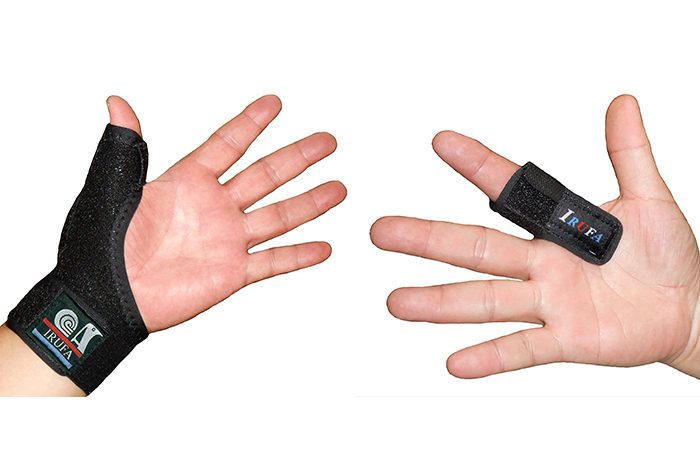
Trigger finger is caused by repeated movements. When an individual suffers from trigger finger, one of the first treatments discussed is splinting. A trigger finger splint has been found to be effective when rest and over-the-counter anti-inflammatories have failed or become less effective.
Splints limit motion of the affected finger, while at the same time allowing full range of motion in the rest of the hand. In some studies, up to 70% of patients will find help with a splint (Patel & Bassini, 1992) and other studies have shown that splints may help patients avoid surgery. In a study by Shiozawa et al., 67% of patients that used a splint avoided surgery compared to 30% of patients in the non-splinting group (Shiozawa et al, 2012).
Trigger finger can be caused by repetitive movements, and results in swelling of the finger flexor tendon or adjacent pully. Trigger finger splints keep the finger into a straight position, and can minimize movement of the affected finger and prevent further irritation.
The splint can allow the tendon to rest and recover. If you experience pain and stiffness in the morning a splint at night may help.
There are different types of trigger finger splints. Some people find certain types to be more comfortable and effective than others. Certain splints have been shown to be more helpful than others. One study showed that MCP splints resulted in a 77% success rate compared to DIP splints resulting in a 47% success rate (Tarbhai et al, 2012).
Disclosure: Purchases from Amazon affiliate links yield a commission.
Patel MR, Bassini L. Trigger fingers and thumb: when to splint, inject, or operate. J Hand Surg Am. 1992 Jan;17(1):110-3.
Shiozawa R, Uchiyama S, Sugimoto Y, Ikegami S, Iwasaki N,
Kato H. Comparison of splinting versus nonsplinting in the treatment of
pediatric trigger finger. J Hand Surg Am. 2012 Jun;37(6):1211-6.
Tarbhai K, Hannah S, von Schroeder HP. Trigger finger
treatment: a comparison of 2 splint designs. J Hand Surg Am.
2012;37:243-9.
Learn about ultrasound-guided A1 pulley release for trigger finger treatment, a minimally invasive procedure with a 97% success rate and fast recovery time. This technique is safer and more effective than traditional
Read MoreTrigger finger, also known as stenosing tenosynovitis, is a common hand condition that affects the tendons in your fingers or thumb. If you're dealing with pain, stiffness, or a locking sensation in your fingers, you
Read More